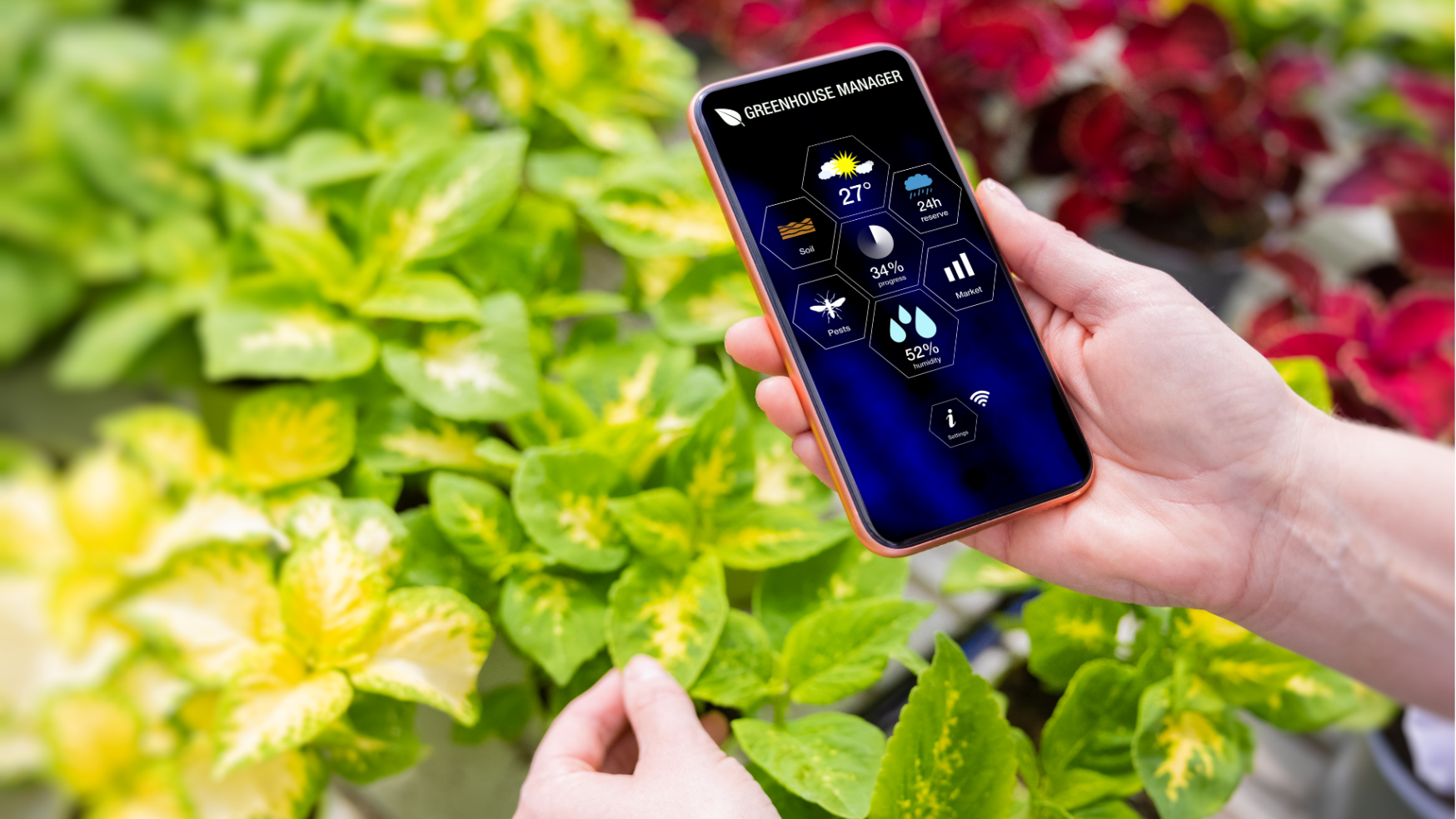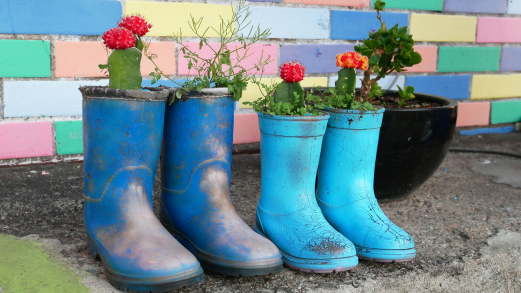
I’m an avid gardener and I love spending time in my vegie garden, but my gaze would often drift over to an ugly tin shed that seemed to dominate the garden. I decided I would somehow jazz up the front of the shed with something, perhaps a coat of paint, hide it with tea-tree sheets or even let the kids go with can of paint and immortalise themselves with their handprints all over it. Then I thought better of the latter idea.
I was rummaging through the shed for suitable paint when I came across a box of old ceramic tiles. Then the idea hit me. I could mosaic the shed front!
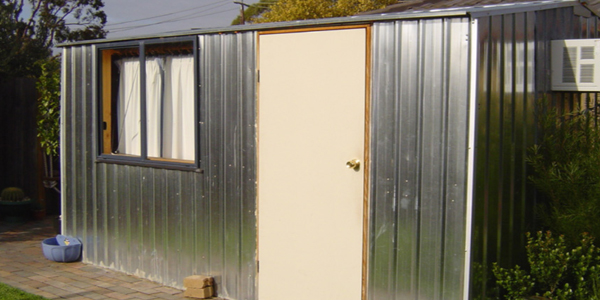
There were some problems to sort out first though. I had no mosaic experience whatsoever and my colour co-ordinating is, well, non existent. Not to mention that you cannot just stick tiles onto corrugated tin and expect them to stay there. There was also the problem of cost and this was by no means a small project. It was starting to sound too hard, but I was excited about the idea of recycling the tiles so I borrowed a few mosaic books for inspiration and pored over the beautiful pictures.
I read that I’d need to attach cement sheeting to the shed to provide a flat surface so the tiles would adhere. I had some tiles, but not nearly enough, so I asked on Freecycle for any unwanted coloured tiles. I received many! I didn’t want tiny smashed tile bits to work with; I wanted a big bold design that would also be quick to apply.
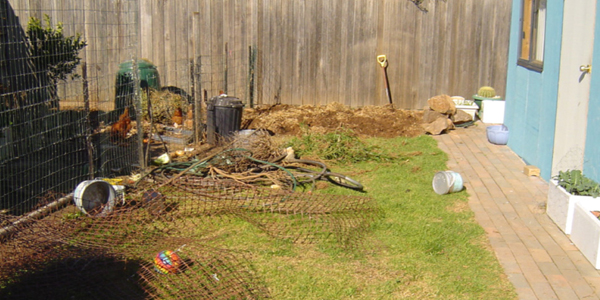
Having done my homework I was ready. I decided I wanted a circular ‘flower’ pattern so I used a tile cutter to create wedges for some of the flower petals, but left the majority uncut. My dear husband bolted cement sheeting securely to the shed and applied silicone around the edges for moisture-proofing.
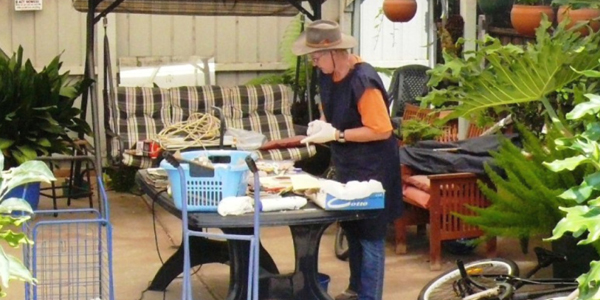
I first assembled the loose tiles onto a sheet of cardboard. I had no colour pattern to go on as such; I just sorted them to whatever colour rounds that I liked. With my pot of tile glue I started. I don’t know how many times I glued myself to the shed, an arm, an elbow, even a knee once, but it was fun! The tiling took place over a few months. I took breaks sometimes for weeks at a time and during extreme weather events, but I finally finished adding the ‘flowers’ and stood back to admire it. A masterpiece was starting to emerge.
I had originally planned for the background tiles to be pale green, but I came across sheets of discontinued sky blue tiles for $1 per sheet. Bargain! I grabbed as many as I could. It was very peaceful working on my own, filling in the background. I often stayed out until it was too dark to see that I was covered in tile glue. After finally adding the last tile I stood back to take a look and I realised the blue background perfectly complimented the blue summer sky. It proved to be an excellent colour choice after all.
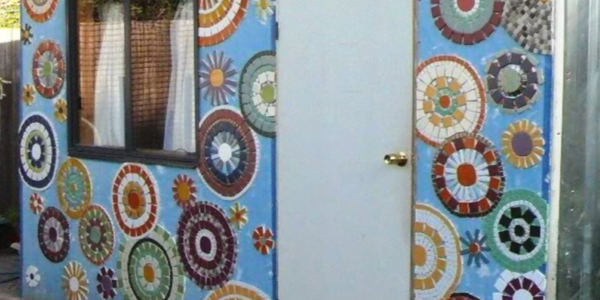
Then I received a good strong door, again from freecycle. It needed a coat of paint, but what colour? A good friend provided me with colour inspiration and I took a spare tile to a paint shop for colour matching. I couldn’t wait to get home with my pot of hideously bright orange paint and get started. My good friend also informed me of some café curtains in a charity shop that looked to be of a similar orange colour, so off I went to find them. I could hardly miss them and couldn’t believe my luck, they were an exact colour match! A cute pot of fake sunflowers for a finishing touch on the windowsill completed my shed beautification project.
Years later the shed mosaic has been admired and photographed by many. It’s been through several freezing winters and scorching summers but is as good as the day it was finished. Nowadays I love looking up from tending my garden and seeing this cheerful piece of garden art. It really does make me want to spend more time outside. I’m quite proud of it. And even more so to discover I do have some, albeit small, artistic ability after all!
Tell us your story!
This post has been submitted by one of SGA’s website subscribers. We want to share your great gardening stories with the rest of our readers. Do you have an interesting gardening story to tell? Click here to find out more.
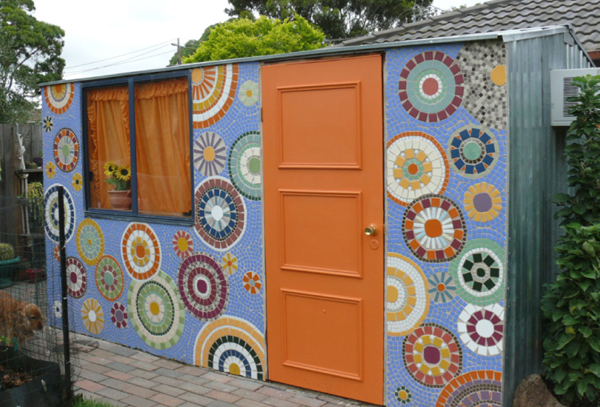
Related Articles:
Citizen Science: A Pathway to Gardening Success and Biodiversity Conservation
In recent years, the realm of science has experienced a remarkable transformation, one that invites people from all walks of life to participate…
A Sustainable Gardener’s Guide to Thrifty Gardening
Creating an eco-friendly and cost-effective garden involves more than just nurturing plants; it's about adopting a sustainable approach that…


